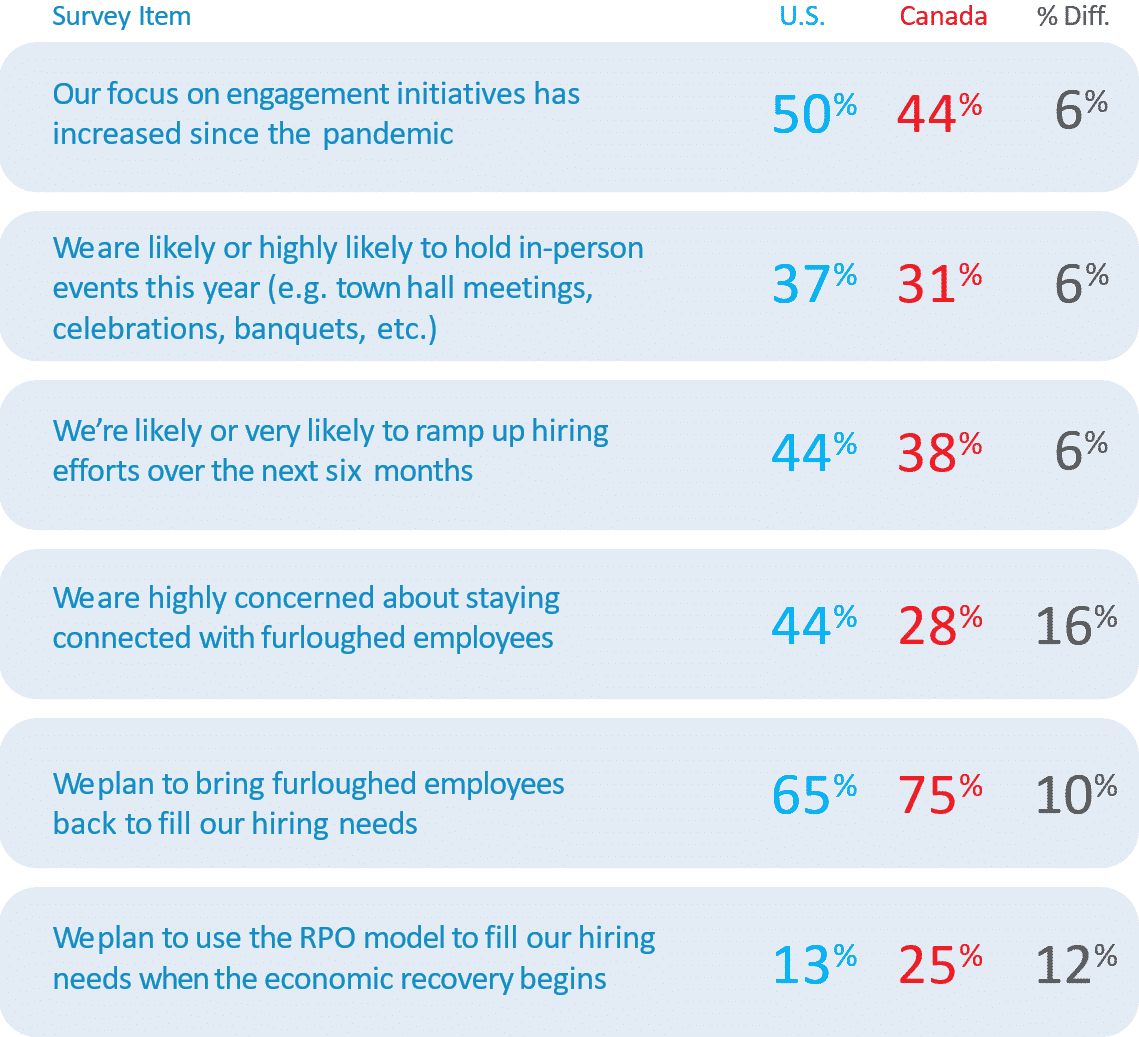The Path Forward
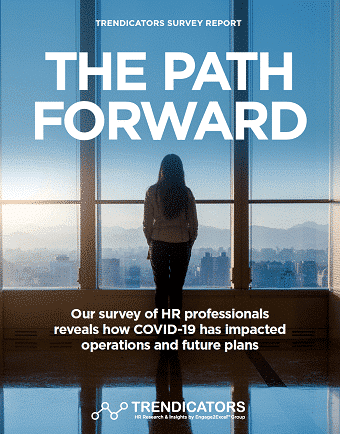
“The key is to keep the DNA of the business intact so that when we come back out of this incredible, unique situation, we have all the building blocks we started with before to spring right back into business.”
—KEVIN O’LEARY, SHARK TANK
Download
 hbspt.cta.load(123973, '31ac3029-43d2-4c45-a78b-5abf4be89102', {});
hbspt.cta.load(123973, '31ac3029-43d2-4c45-a78b-5abf4be89102', {});
What has COVID-19 taught us about the role of HR?
There are many unsung heroes of the COVID-19 pandemic. But few groups have received less recognition or are more deserving of praise than the HR professionals who have worked tirelessly to help keep their organizations functioning amidst a sea of fear, uncertainty and often dubious information. They have had to become experts overnight in myriad legal, health and safety, social and psychological issues, releasing policies on topics that were never before anticipated, all while keeping the lines of communication plumbed with persistent reminders to the rank and file and executive suite that we’re in this together and will somehow make it through okay. Veterans of previous crises understood that swift action and compassion are not mutually exclusive, and that delayed decisions amidst dual health and economic catastrophes end up extracting a far greater toll. Other than the brave healthcare professionals who continue to risk their lives on the pandemic front lines, few professions have shouldered a heavier emotional burden throughout this crisis. And it’s far from over.
From the onset of the crisis, HR professionals throughout North America sprung into action consulting with experts collecting research, identifying best practices and collaborating with peers to identify a path forward. In March, 40,000 HR people joined a SHRM webinar, the largest in that organization’s history. But rarely do HR professionals get the respect they deserve.
Five years ago, Harvard Business Review (HBR) ran a cover story titled “It’s Time to Blow Up HR and Build Something New.” The stories inside this issue criticized HR for too much administrivia and not enough strategic insight or programmatic impact. These kinds of articles would never see the light of day in our current environment, because HR organizations have provided the proverbial glue, paper clips and duct tape that have held organizations together. And, as we begin to move down the path to recovery, our HR teams will serve vital roles in bringing back furloughed workers, ensuring workplace safety, engaging and motivating remote employees and attracting and retaining the talent needed to enable a safe and speedy recovery.
If you are wondering what can be learned about the role of HR as a result of the COVID-19 pandemic, consider this: Where would your organization be today if those who advocated blowing up HR five years ago had their way?
This report provides insights into how HR practitioners and leaders view the impact the pandemic has had on their organizations and how they see the path forward. The report is based on a survey of 522 respondents, conducted between May 12 and 19, 2020, with HR professionals representing a diversity of organizational sizes, industries and job titles.
Download
 hbspt.cta.load(123973, '31ac3029-43d2-4c45-a78b-5abf4be89102', {});
hbspt.cta.load(123973, '31ac3029-43d2-4c45-a78b-5abf4be89102', {});
About the Survey
- Administered between May 12 and 19, 2020
- 522 human resources respondents, including Engage2Excel (E2E) Group clients
- Overall confidence level and margin of error 95% +/- 4.2%
About the Respondents
- 100% of respondents are actively employed
- 57% female | 43% male
- Respondents live in the U.S. (346) and Canada (176)
- Respondents represent a diversity of organizational sizes and job levels
ORGANIZATIONAL SIZE (# of employees)
1-499 (24.9%)
500-999 (21.84%)
1,000-2,499 (15.9%)
2,500-4,999 (13.03%)
5,000-9,999 (8.43%)
10,000-24,999 (5.94%)
25,000 or more (9.96%)
JOB LEVEL
CHRO (12.64%)
VP/SVP/EVP (5.56%)
Director/Senior Director (25.10%)
Manager (36.97%)
Individual Contributor (19.73%)
Trendicators is the research division of the E2E Group of companies, leading providers of engaging career and consumer experiences. Trendicators provides original HR research, along with reports on insights and best practices from industry leaders and experts.
Download
 hbspt.cta.load(123973, '31ac3029-43d2-4c45-a78b-5abf4be89102', {});
hbspt.cta.load(123973, '31ac3029-43d2-4c45-a78b-5abf4be89102', {});
Workforce Reductions
Our survey results reflect the varying degrees of impact that the COVID-19 pandemic has had on workforce reductions. A clear majority of respondents (58%) furloughed employees, and for many, those furloughs ran deep, with 59% of respondent organizations furloughing 30% or more of their employees. However, more than a quarter (27%) were essential businesses that saw their workforces grow during the crisis, a third have seen no change, and 40% experienced decreases in the overall size of their workforce. Not surprisingly, 74% of respondent organizations were concerned or very concerned about staying connected with furloughed employees.

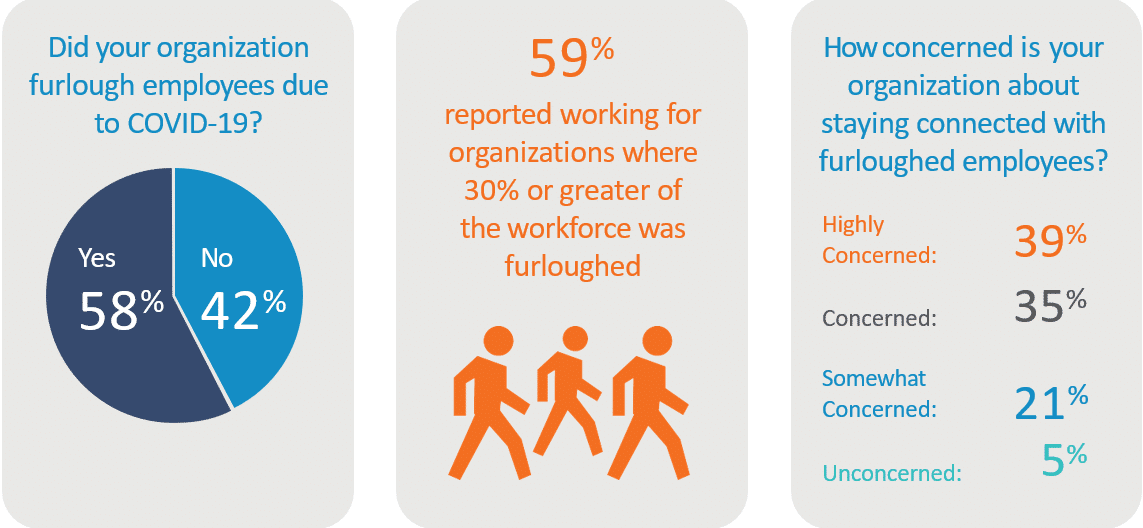
Download
 hbspt.cta.load(123973, '31ac3029-43d2-4c45-a78b-5abf4be89102', {});
hbspt.cta.load(123973, '31ac3029-43d2-4c45-a78b-5abf4be89102', {});
Working Remotely
While many experts have postulated that the experience of millions of employees working remotely will forever change the workplace, HR professionals envision a more modest change when things begin to return to normal. Our respondents indicated that, on average, 36% of their workforce was working remotely before the crisis. That number jumped to 56% during the crisis and is expected to level out with 39% of employees—an 8% net increase—working remotely once stay-at-home orders subside. The top two challenges for organizations today are 1) engaging and 2) recognizing and rewarding remote workers.
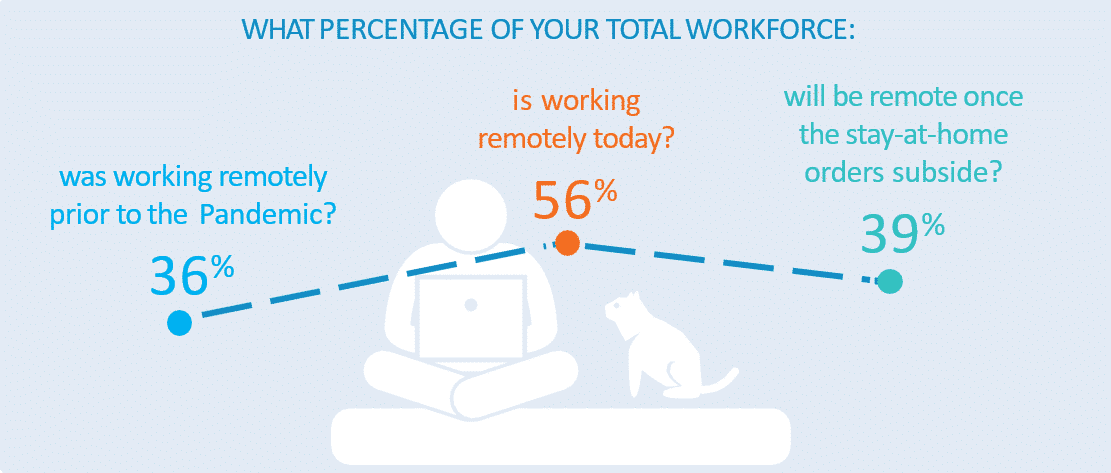

Download
 hbspt.cta.load(123973, '31ac3029-43d2-4c45-a78b-5abf4be89102', {});
hbspt.cta.load(123973, '31ac3029-43d2-4c45-a78b-5abf4be89102', {});
Engaging & Recognizing Employees
Employee engagement levels can make or break a brand—especially during a crisis. More than two-thirds (69%) of senior leaders are concerned about employee engagement levels, but less than half of respondents say that their organizations have increased their focus on engagement issues. COVID-19 has had a significant impact on recognition and rewards budgets, with 34% of organizations expecting to spend more, 34% planning on spending less and 24% not expecting any change for the duration of 2020.

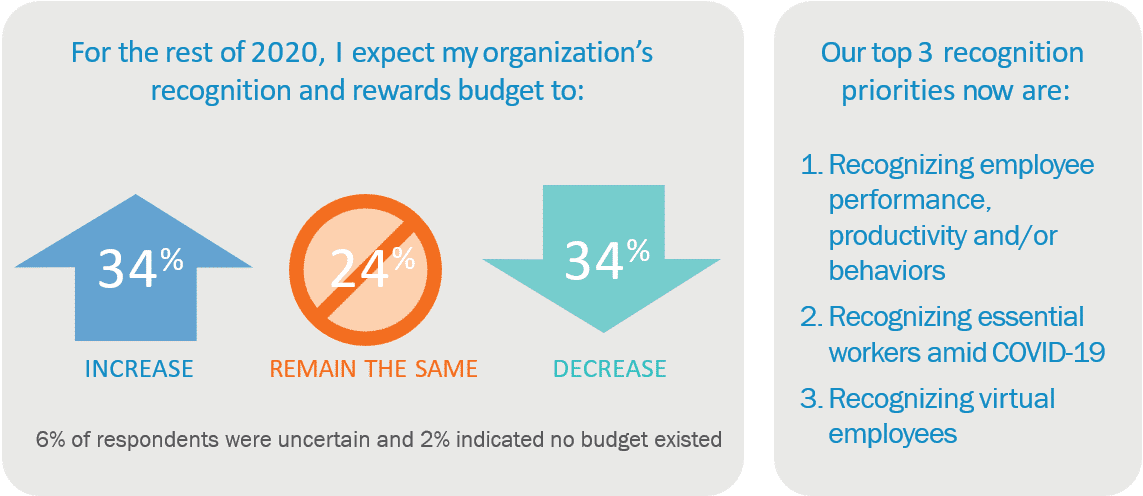
Download
 hbspt.cta.load(123973, '31ac3029-43d2-4c45-a78b-5abf4be89102', {});
hbspt.cta.load(123973, '31ac3029-43d2-4c45-a78b-5abf4be89102', {});
Talent Acquisition
It’s still too early to tell what shape the recovery will take. But whether it is U-shaped, V-shaped or swoosh-shaped, all agree that the bounce-back is beginning. Over the next six months, 42% of respondents expect their organizations to ramp up hiring efforts. This corresponds with the fact that 42% expect their talent acquisition budgets to increase. But the prevailing outlook for meeting hiring needs is practical, with 67% bringing people back from furlough first, followed by 34% who say they’ll use a temp-to-perm model, 26% who will use contract recruiters and 18% who will build out a Recruitment Process Outsourcing (RPO) model.

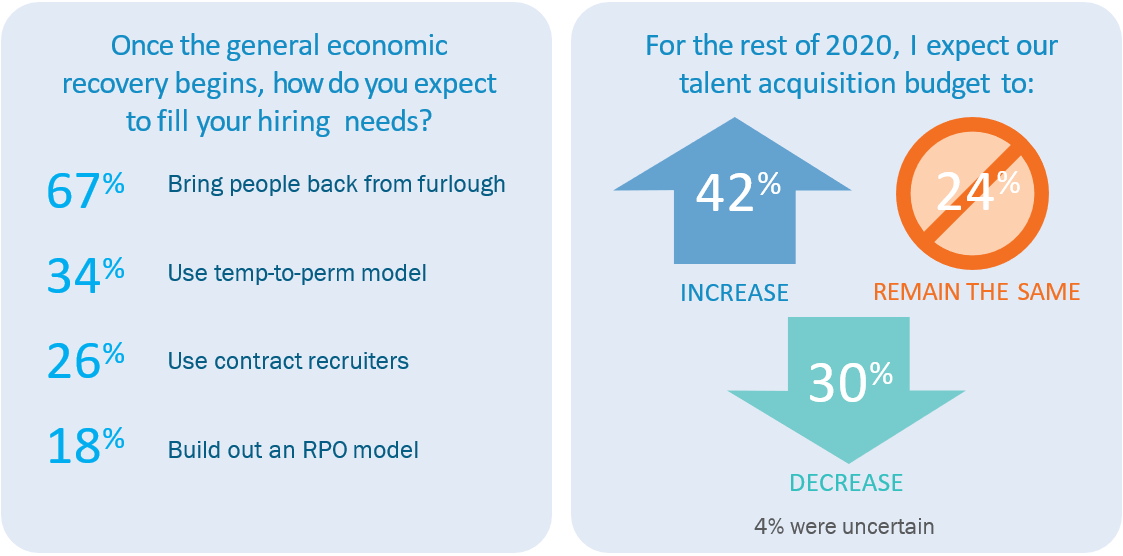
Download
 hbspt.cta.load(123973, '31ac3029-43d2-4c45-a78b-5abf4be89102', {});
hbspt.cta.load(123973, '31ac3029-43d2-4c45-a78b-5abf4be89102', {});
HR Priorities
In planning to facilitate recovery from the worst economic crisis since the Great Depression, HR departments are focused on acquiring, managing and developing the talent their organizations will need most. However, ensuring the health and safety of workers is the second-highest priority, according to our survey respondents. Technology has played a vital role in reducing some of the pandemic impacts, enabling tens of millions of employees to work from home. Now, as all organizations seek to optimize efficiencies during the difficult times ahead, our respondents expressed high degrees of interest in leveraging emerging technologies.
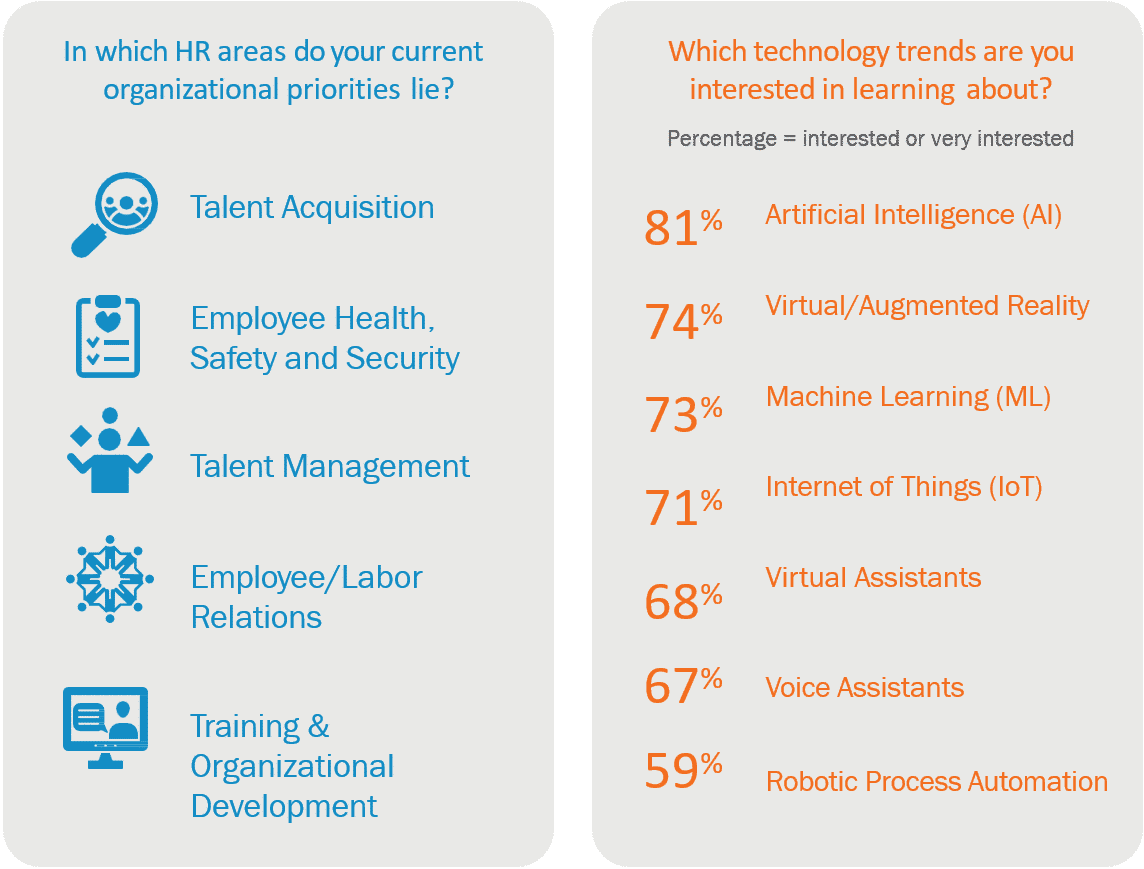
Download
 hbspt.cta.load(123973, '31ac3029-43d2-4c45-a78b-5abf4be89102', {});
hbspt.cta.load(123973, '31ac3029-43d2-4c45-a78b-5abf4be89102', {});
Business Outlook
In analyzing the views of HR professionals as expressed through our survey results, a picture emerges of a prevailing mindset that is vital as organizations begin to recover from the consequences of the crisis. There is a strong sense of pragmatic optimism in the views expressed below. The HR people we surveyed, who are statistically representative of the profession overall, have a very high degree of confidence (79%) in their organization’s futures, and most (65%) believe their organizations will emerge stronger as a result of the crisis. But 92% believe that the world of work will never be the same, and 82% believe new leadership skills are needed to navigate the crisis and that managers will play a vital role in inspiring employees along the path forward to recovery.
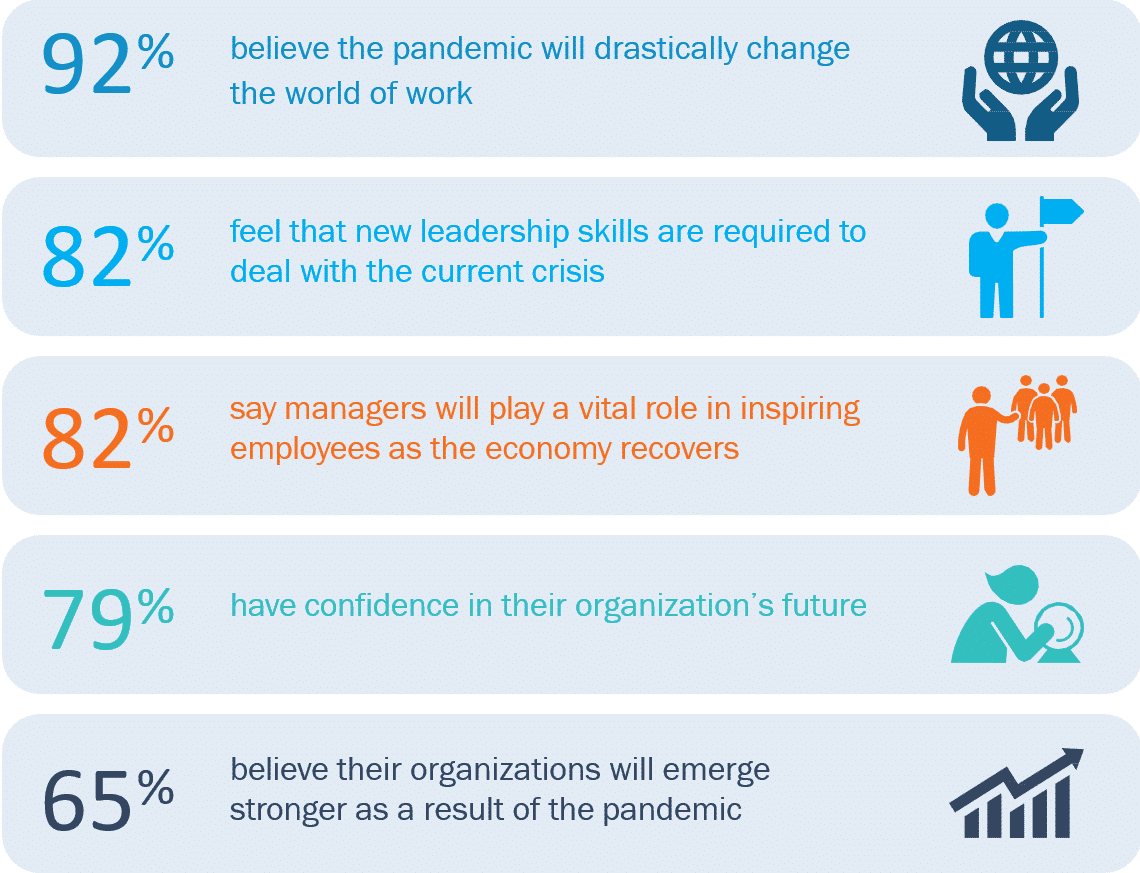
Download
 hbspt.cta.load(123973, '31ac3029-43d2-4c45-a78b-5abf4be89102', {});
hbspt.cta.load(123973, '31ac3029-43d2-4c45-a78b-5abf4be89102', {});
Survey results differences between the U.S. and Canada
Survey results from HR professionals in the U.S. and Canada were quite consistent. Most differences fell within the margin of error, with the following exceptions.
